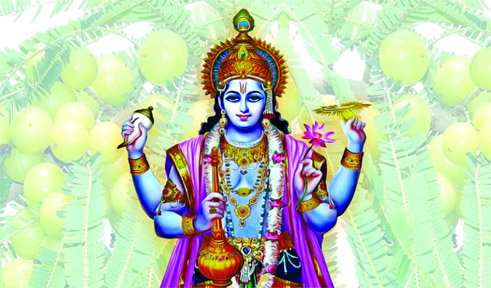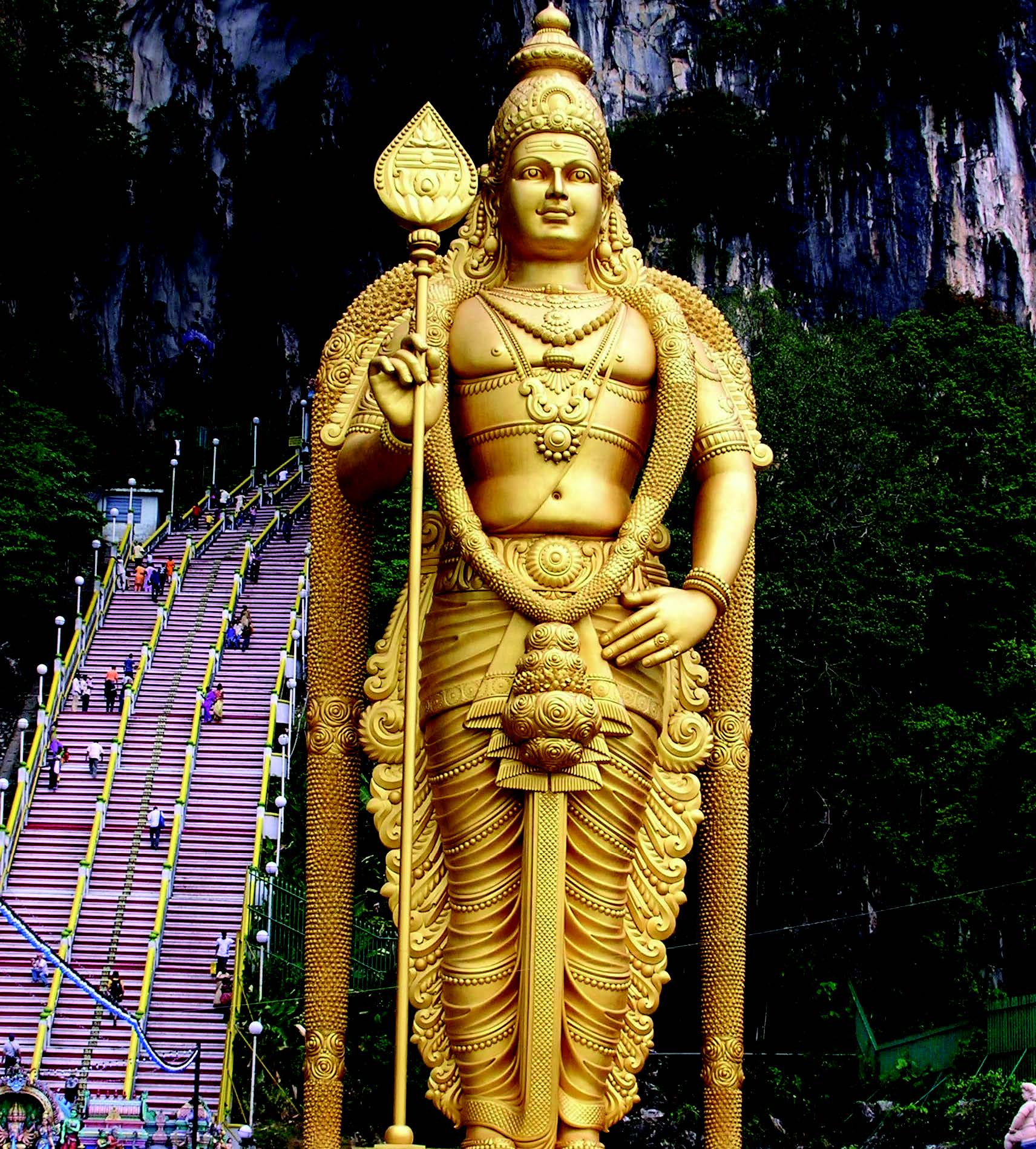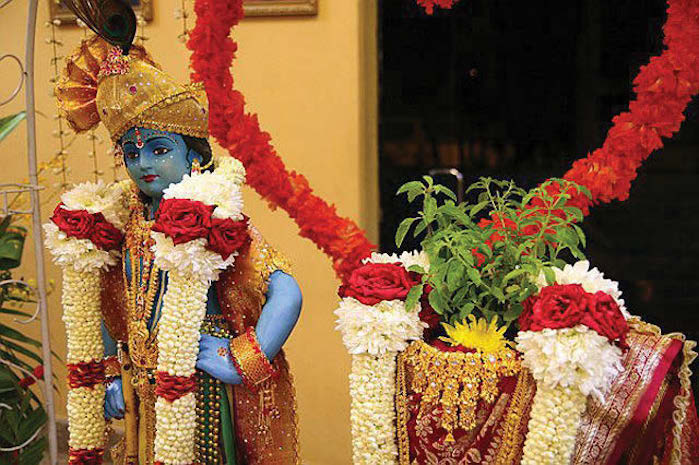
The Navami of the Shukla Paksha in the month of Kartik, after Diwali, is considered very special for the worship of Lord Vishnu, as it leads to the attainment of wealth and prosperity. It is known as Amla Navami and Akshay Navami.
On this day, women sit under the Amla tree to pray for the blessings of children, health, peace in the home, financial gain, and protection for their children. The Amla tree is regarded as a sacred tree, believed to be the abode of Lord Vishnu.
Amla Navami Significance
As the name ‘Akshay’ suggests, any charitable or devotional acts performed on this day yield everlasting rewards; the merit gained not only benefits the individual in this life but also in future lives. On Amla Navami, Lord Vishnu defeated the demon named Kushmandak. It is also believed that Lord Krishna circumambulated three forests before killing Kansa on Amla Navami.
Auspicious Activities
While the entire month of Kartik holds significance for bathing in sacred rivers, taking a dip on Navami is said to confer eternal merit.
On this day, cooking and consuming food under the Amla tree is particularly meaningful, as it promotes excellent health and radiates positive energy.
During the auspicious occasion of Akshay Navami, circumambulating Mathura-Vrindavan is also performed, which is believed to grant the individual a place in Vaikunth Dham.
Satya Yugadi
It is believed that the day of Akshaya Navami was the beginning of Satya Yuga. Hence Akshaya Navami is also known as ‘Satya Yugadi’. This day is considered an important day for all kinds of charity and charitable activities. As the name Akshay suggests, doing any charitable or devotional work on this day never diminishes and benefits the person not only in this life but also in the next life.
Amla Navami
Akshaya Navami is also celebrated as ‘Aonla Navami’ in different parts of the country. On this day, the Amla tree is worshipped as it is believed to be the abode of all Gods and Goddesses. In the Indian state of West Bengal, this day is celebrated as ‘Jagdhatri Puja’, in which the Goddess of Satta ‘Jagadhatri’ is worshiped with full devotion.
Kushmanda Navami
Akshaya Navami is also celebrated as ‘Kushmanda Navami’ because according to Hindu legends, on this day Lord Vishnu defeated the demon named ‘Kushmanda’ and obstructed the spread of adharma.
How to worship Amla Navami
After taking bath in the morning, with a pure soul, sitting under the Amla tree in the east direction should be worshipped. After worship, water or raw milk should be given in its root. After this a raw thread should be tied around the tree. Performing aarti with camphor wick or pure ghee wick should be circumambulated seven times. After this, the Brahmin should be given food and donated dakshina under the tree.
Spiritual Embrace of Amla
The Amla tree holds a special place in Hindu mythology and traditions. It’s considered sacred, associated with divine entities like Lord Vishnu and Goddess Lakshmi, symbolizing longevity, prosperity, and good health. This revered tree embodies purity and spiritual potency.
Rituals and Observances
Devotees observe Amla Navami with various rituals and practices. Temples become vibrant centers of prayer and devotion, where devotees offer special prayers to Lord Vishnu and Goddess Lakshmi, seeking blessings for health, wealth, and prosperity.
Importance of Amla Fruit
The Amla fruit itself is renowned for its medicinal properties. Rich in vitamin C and other nutrients, it’s not just a religious symbol but also a significant component in Ayurvedic medicine. Some people consume Amla fruits on this day, believing it brings blessings and auspiciousness.
Gratitude to Nature
Amla Navami isn’t just a religious event; it’s also a celebration of nature’s gifts. It’s a reminder of the harmony between mankind and the environment, emphasizing the sacredness of trees and their invaluable role in our lives.
Cultural Significance
The festival isn’t limited to prayers and rituals; it’s an occasion for cultural activities, with communities coming together to celebrate. Folklore, music, and dance performances often mark the festivities, adding vibrancy and joy to the occasion.
Symbol of Well-Being
Amla Navami encapsulates the essence of holistic well-being. It symbolizes spiritual wellness, physical health, and the harmony between nature and mankind. The reverence shown towards the Amla tree represents the deep-rooted cultural traditions that honor nature and its abundance.
Amla Navami Katha
A childless virtuous and charitable merchant lived in the city of Kashi. One day, a neighbor said to the merchant’s wife, if you sacrifice a foreign boy in the name of Bhairav, then you can get a son.
When the merchant came to know about this, he refused. But his wife kept looking for the spot.
One day he dropped a girl in a well and sacrificed her in the name of Bhairon Devta. The result of this murder was the opposite. Instead of profit, there was leprosy in his body. The girl’s spirit started haunting her. On asking the merchant, his wife told the whole thing. On this the merchant started saying that there is no place in this world for cow slaughter, Brahmin slaughter and child slaughter. That is why you can go to the banks of the Ganges and worship God and take a bath in the Ganges, then only you can get rid of this trouble.
The merchant’s wife started living on the banks of the Ganges. After a few days Ganga Mata came to him disguised as an old lady and said that you should go to Mathura and fast on the Navami of Kartik month by circumambulating the Amla tree and worshiping it. By observing this fast, your leprosy will go away.
Listening to the old lady, she went to Mathura after taking permission from the merchant and started fasting on Amla methodically. By doing this she became divine body by the grace of God and she also got the son.





Be the first to comment